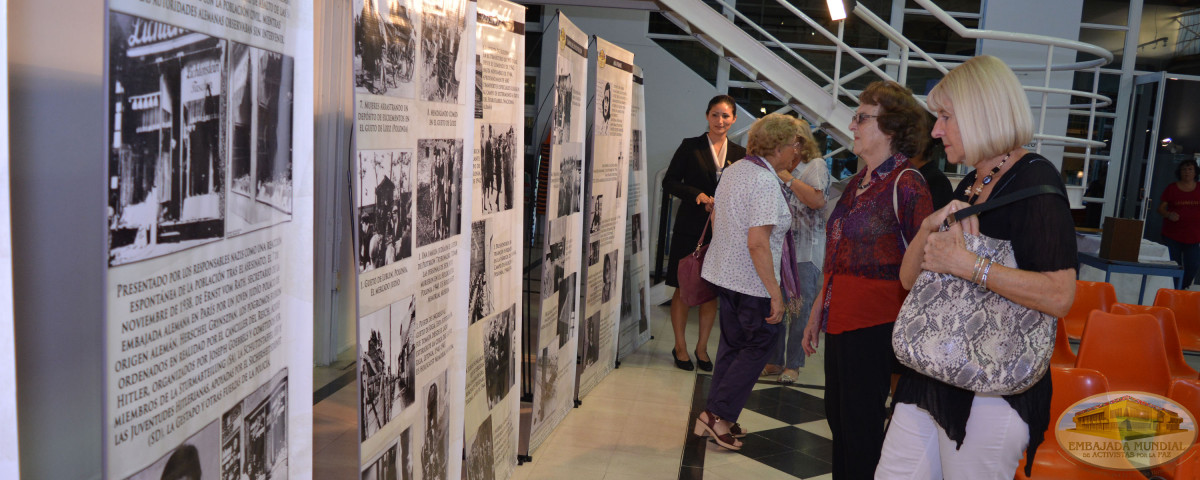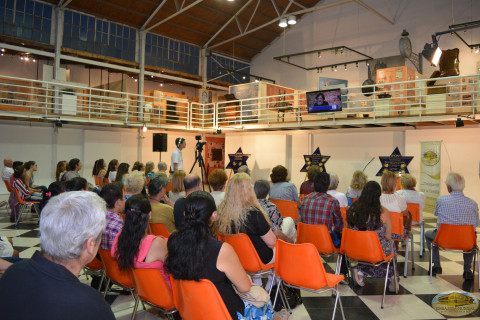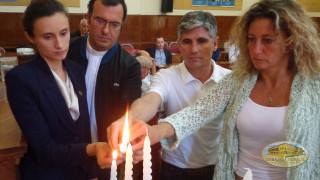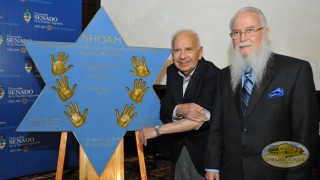Remembering the Past to Raise the Present Generation's Awareness
In different provinces of Argentina, the Global Embassy of Activists for Peace (GEAP), as part of the Traces to Remember Project solemnized the International Holocaust Remembrance Day (January 27), to remember the past and raise the present generation’s awareness.
The commemorative event was held to identify the warning signs of the emergence of extremist governments, groups, or individuals who carry out these actions, and which may trigger a new crime against the human family.
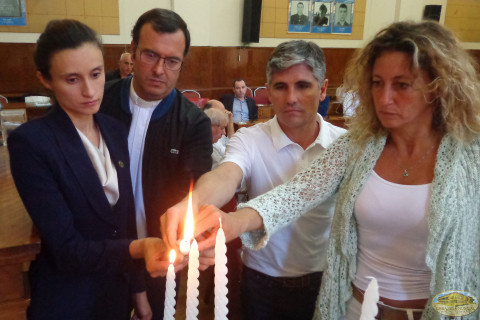 Mar del Plata
Mar del Plata
The Honorable Council of Deliberation of the city of Mar del Plata and the Israelite Marplatense Society (SUIM), held an event in memory of the victims of the Holocaust, where they remembered the suffering that millions of human beings lived.
The commemoration was attended by various entities, including governmental, military, academic, security forces, special guests, Activists for Peace and the general public.
The event opened with the screening of the institutional video "Stories of Grandmothers, Identity is not Imposed," created by staff from the Auditorium Theater-Provincial Center for the Arts; a documentary on the importance of remembering the Holocaust was also presented.
Avoid repeating things
The President of the Deliberative Corps, Guillermo Sáenz, said:
"The extraordinary thing about this is to not forget because we are going to avoid repeating things; because when they want to repeat themselves, we must cut them right away."
 On her part, the Director of the College of Arturo Illia, Alfonsina Guardia, stated: "It has been 72 years and we must always say that we remember. We must say, 'no!' We must say, 'never again.'
On her part, the Director of the College of Arturo Illia, Alfonsina Guardia, stated: "It has been 72 years and we must always say that we remember. We must say, 'no!' We must say, 'never again.'
Sonia Rewiki, the Director of Human Rights based her presentation topic on the testimony of the Holocaust survivor, Liza Zajac de Novera, and made reference to one of her ideas: "This is precisely the day we remember the victims of the Holocaust claiming the identity of each one of them and of each human being."
During her participation, Claudia Malamud, President of SUIM, stressed:
During her participation, Claudia Malamud, President of SUIM, stressed:
Then, the seven candles in the Menorah (candelabra of seven arms) were ignited. To conclude, the Vicar General, Presbytarin Gabriel Mestre, and the seminary scholar Daniel Somerstein, presented a prayer for the victims.
Tres Arroyos
Then, the seven candles in the Menorah (candelabra of seven arms) were ignited. To conclude, the Vicar General, Presbytarin Gabriel Mestre, and the seminary scholar Daniel Somerstein, presented a prayer for the victims.
During her participation, Goicoechea identified as a sign of alarm the mistreatment of the the Mapuche indigenous people, residents in southern Argentina, by the police.
During her participation, Goicoechea identified as a sign of alarm the mistreatment of the the Mapuche indigenous people, residents in southern Argentina, by the police.
As part of the commemoration, the plaques in the shape of the Star of David and containing the palm prints of the Holocaust survivor, as well as the prints of their descendants, were exhibited as evidence that Nazism could not extinguish the Jews.
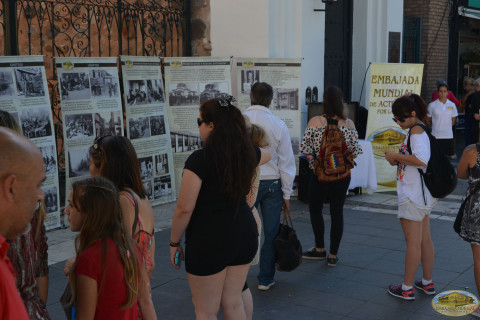 Córdoba
Córdoba
In Córdoba, the plaque with the palm prints of the only survivor of the Auschwitz Camp, who lives in this region, Edgar Wildfeuer, was exhibited and he participated in a photographic exhibition of the Casa del Obispo Mercadillo, a historical monument in the center of the city.
More than 600 citizens visited the site, including Wildfeuer. The visitors left their impressions in a book of minutes (See: Written minutes book).
Resistance
An exhibition of educational lessons was carried out in the Peatonal de Resistencia, Chaco, along with the exhibition of the plaque in the shape of a Star of David with the palm prints of the Holocaust survivor, Irene Korytnicki.
Around 1,000 people visited the exhibition, including teachers, journalists and historians, who asked questions about the samples presented.
